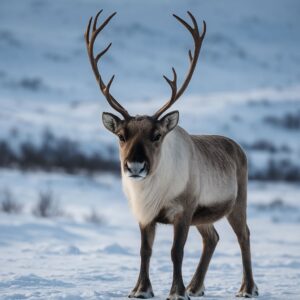 Reindeer, also known as caribou in North America, are remarkable survivors of the coldest regions on Earth. Native to the Arctic tundra and boreal forests of Europe, Asia, and North America, they’ve evolved a suite of adaptations to endure extreme climates. Their hooves change with the seasons, soft and spongy in summer for traction on wet ground, and hard and sharp in winter for cutting through snow and ice. Their thick, hollow-fibered fur traps heat, and even their noses warm the air before it reaches their lungs.
Reindeer, also known as caribou in North America, are remarkable survivors of the coldest regions on Earth. Native to the Arctic tundra and boreal forests of Europe, Asia, and North America, they’ve evolved a suite of adaptations to endure extreme climates. Their hooves change with the seasons, soft and spongy in summer for traction on wet ground, and hard and sharp in winter for cutting through snow and ice. Their thick, hollow-fibered fur traps heat, and even their noses warm the air before it reaches their lungs.
Both male and female reindeer grow antlers, a rare trait among deer. These antlers are used for defense, dominance, and foraging through snow. Reindeer are also known for their long migrations, some herds travel over 5,000 kilometers annually in search of food. In winter, they rely on lichen, often called “reindeer moss,” which they dig from beneath the snow using their hooves.
This edition of World-Wide Q&A celebrates reindeer as icons of endurance and adaptation. Whether roaming wild across tundra or starring in holiday tales, they remind us that survival in the cold demands both strength and strategy.